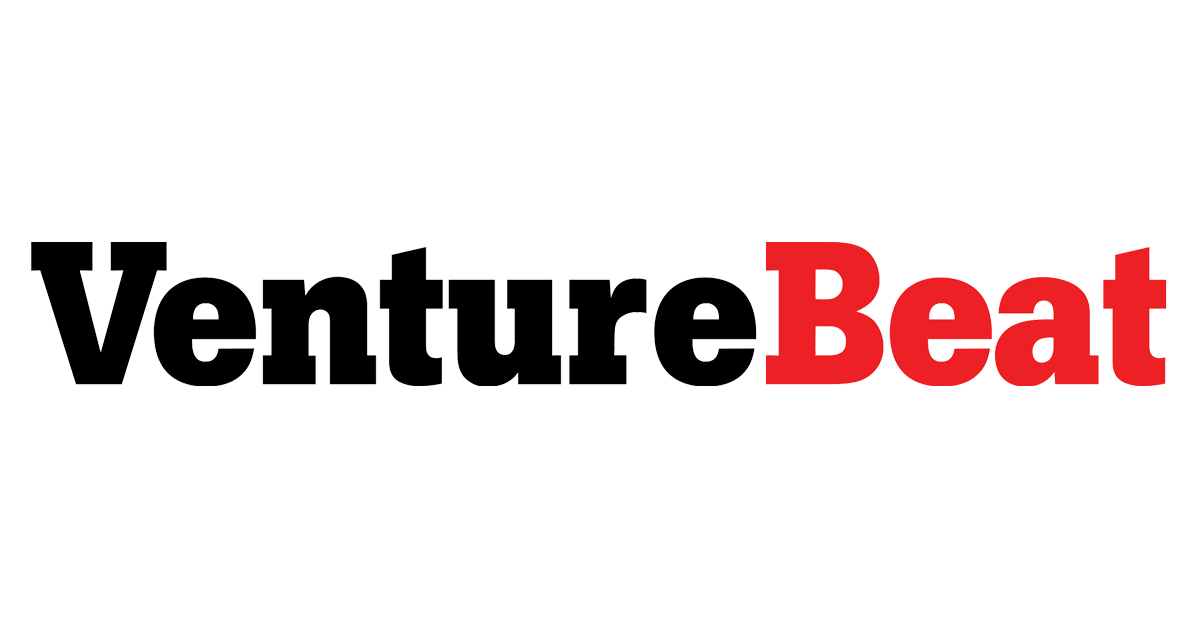Travis Cloyd started making virtual reality films three years ago, and he has made four of them so far. That record was enough to earn him the award for VR Visionary at the Cinequest film festival in San Jose, California. That’s because VR is such a young medium, and Hollywood storytellers like Cloyd are still experimenting with how to do these films.
At Cinequest, Cloyd showed off his VR film that promotes the new Nicholas Cage movie, The Humanity Bureau. It’s a dystopian science fiction thriller set in the year 2030, when a massive recession and global warming catastrophe forces society to get rid of its unproductive members. The 2D film debuts on April 6.
Cloyd has also created VR promo films for John Travolta’s upcoming Speed Kills and the Wesley Snipes film The Recall. At Cinequest, Cloyd won Best VR Feature Film for Speed Kills and Best Sci-Fi VR Film for The Humanity Bureau.
With those VR films, Cloyd had to work around the schedule and production for the 2D films, and he also had to figure out how to place the cameras so they captured 360-degree action — without making viewers seasick.
Cloyd is still making the transition between traditional film and the new storytelling medium of VR. He thinks it has great potential to draw attention to upcoming films, and eventually VR movies will be a medium of their own. He made The Humanity Bureau with Mind’s Eye Entertainment, and it is being distributed by OneTouchVR on a variety of platforms: Google Play, Oculus VR, Oculus Gear VR, and iOS. Steam and HTC Vive are coming soon.
I interviewed Cloyd at Cinequest, along with my own budding filmmaker, my daughter Danielle Takahashi. We covered everything from his hopes for VR to what he’s learned about making films in a new medium. Here’s an edited transcript of our interview.
VentureBeat: How did you get interested in VR as opposed to traditional film?
Travis Cloyd: My background is more from a digital marketing type of arena. I started off building websites, running social media campaigns, building applications, doing video compression and video conversion for corporate videos. Trying to build awareness for companies and brands and entrepreneurs I worked for. I’ve been running that digital marketing agency for the last decade.
Over the course of the last few years, I decided I wanted to tell stories in this new immersive format. But before I got into cinematic VR I was doing a lot of branded VR. I would shoot concerts, live events, sporting events, branded 360 content. That was used for more promotional purposes. I was also still marketing movies. I wanted to combine that.
VentureBeat: Creating trailers, or —
Cloyd: Creating supplemental VR experiences that coexist with the movie, so that the fans could enjoy those 360 experiences, but also lead them to go watch the movie. It started off as a marketing solution to create more buzz and awareness for the 2D movie, so that people would become somewhat familiar with the movie through 360. But at the same time, they could watch that and think, “Oh my gosh, now I’m in the movie. This is really cool.”
VentureBeat: And for you, that work started in the last couple years?
Cloyd: I started doing VR at the beginning of 2015. In 2016 I started to write.
VentureBeat: So before the original Oculus shipped.
Cloyd: Right. In 2016 we started making cinematic VR. The first movie I did was with Mind’s Eye Entertainment out of Canada called The Recall, with Wesley Snipes. Wesley was a visionary actor. We approached him to take part in the VR experience with the movie, and he was really excited for it. We created a first-person passive experience through the eyes of one of the characters in the movie.
We shot the 2D movie, but then we took one of the actors in it, removed him, put in a 360 camera operator, and taught the cast how to interact with him as if they were in the movie. Technically an actor isn’t supposed to look at the camera, right? But when you add a 360 camera for a first-person perspective, they have to act with that camera as if it’s one of the characters in the movie.
The Recall launched on VOD and in theaters in June. We also delivered it in a 13-minute VR experience simultaneously. Since then I’ve done four movies in VR. The next one we did was The Humanity Bureau with Nicolas Cage, and then I did a movie called Distorted with John Cusack and Christina Ricci. Recently I did a movie called Speed Kills VR with John Travolta, Jennifer Esposito, Matthew Modine — a lot of great actors were a part of that one.
VentureBeat: How did you make the transition between traditional filmmaking and VR?
Cloyd: When I was in the digital marketing space, I was a part of some movies. I shot documentaries and executive produced some films. But at the end of the day my mind was always focused on—even if I was making a movie, it was about how to bring that movie to market. How do you make people familiar with your film, considering how many films are out there?
I’ve always had an issue with filmmakers, as compared to companies, for example. When I would market a company, I could do ad campaigns. I could do social media campaigns. I could build different types of strategies to generate awareness for the company. But that company would always grow over the course of time. In movies you spend all these resources, time, energy to market a film, and as soon as it comes out you have a very small window for people to purchase it or watch it. Then it’s old news. The years it took you to make the movie – write a script, tell a story, film it, edit it, market it – was for this one day of release and a short window after.
I always felt that was a horrible business strategy, compared to companies that spend resources over time to grow a business. You’re building a movie brand to get people to see that film and then all of a sudden it’s over. I wanted to create another experience that could coexist with the movie itself. People could watch it in advance of the movie coming out. There’s a place for people to enjoy the film, the brand, for a period of time leading up to the movie.
With that came a lot of hoops to jump through. How do you write those scripts, tell those stories, educate an actor to understand this new medium? How do you create distribution mechanisms to monetize it, or create the applications to showcase them on the market? How do you create marketing to drive people to see VR, but at the same time use it as a format to create awareness for your end product, the feature film?
VentureBeat: When you’re doing these shoots with the actors, are you essentially a second filmmaker on the same set as the 2D director?
Cloyd: Each movie is a little different. Some movies, we’re a part of the production. We have the luxury of coordinating multiple formats during the course of the production. I’ll be the VR producer and the feature film executive producer. In other cases, we’re just a completely different unit from the main production. Almost like we’re the C cam. We’re there to coexist with the movie, but we’re an entirely separate unit that just jumps in and shoots our content when it makes sense for the case and makes sense for the 360 environment.
VentureBeat: Have you had to learn this kind of filmmaking as you go, as you get your hands on new technology? It seems like you have to learn a lot very quickly.
Cloyd: Each movie that I’ve been a part of—you learn so much as you go. This is the wild west of VR. There’s a lot of choices that we have as filmmakers to tell stories in 360, in VR. You’re given a wider landscape. You’re given a bigger format in a 360 world to create your stories. Nobody is a pro yet. Everyone’s still learning as they go.
That’s the great thing about this business. If you think about it in comparison to the history of cinema, for the last 100 years you’ve been solely focused on a 2D screen that’s been the same shape and used the same storytelling process. All of a sudden now you have a 360 world to tell stories. Everyone’s trying to figure out, carve out—what are the best techniques? How do y you use that space? The art of distraction, the art of sound, using that full spectrum to benefit the story.
When an actor comes in at 12:00 and someone’s standing behind them at 6:00 and something else is happening at 3:00 and 9:00—it’s the art of trying to figure out what you want the audience to look at, and when. The great thing about that is, sometimes, when you watch VR, you have to watch it more than once, just to be able to see everything that story has to offer. If you watch it once and you’re facing 12:00, and then there’s some action at 6:00, you might miss it. Your unconscious mind remembers that the next time you watch, so you go back and look behind yourself the next time you’re in the experience.
VentureBeat: I went to CES and saw the Intel keynote there. They talked about the studio they’re building in L.A., and they showed this Western stunt scene they’d made. They showed how it would look filmed in 2D, and then how it looked in VR. You could see things from a horse’s point of view, and all these other unusual angles. You can do some very different things with familiar material or scenes.
Cloyd: It’s a good point. Again, you have that standard format screen, and you shoot everything in a third-person perspective. You allow the audience to sit back and watch that content in a theater or on their television. But when you’re all of a sudden given this 360 format, it’s a different world of immersive content. Sometimes that can become tricky and sometimes it can become very beneficial for both the creator and the audience.
VentureBeat: I also talked to [District 9 director] Neil Blomkamp about a project he’s doing in Unity. They went out in a desert to shoot a 360 piece, having the actors do different scenes. But then if they ever want that desert scene, they have it all captured now in the game engine, and they can put different actors and objects in there. Is that something you’re doing as well, or thinking of doing?
Cloyd: For what I do, in cinematic VR, when you coexist with a feature film production, you have to be able to create content that’s going to shine a light on the 2D movie. You don’t want to capture plate shots or content to be used for something else. You’re using a feature film’s production to be able to benefit that brand, that film’s value, that story. When we’re shooting, we don’t necessarily focus on where else we can use those plate shots for something in the future. We’re solely focused on building the best VR content today that will maximize awareness for that feature film. At the same time, we’re creating an alternative revenue stream that can be monetized and used as awareness in advance of the 2D movie release.
VentureBeat: Some of the scenes you had—it’s a subset of the feature film, but are there some things that, to you, seem like they’re more interesting because you’re able to look at it from a different angle, because it’s in VR?
Cloyd: I look at it like this. When you’re watching the movie, you’re watching the movie. From the VR perspective, now you’re in the movie. You want to use that whole world you’re given to be able to tell the story. When you’re making a movie, you’re given an hour and a half to be able to create the entire story arc of that particular film. You have a beginning, a middle, and end. You have three acts and a payoff. When you shoot in VR, it’s tricky, because you want the audience to absorb the entire story that exists in the movie. You don’t want to give away the entire house. But you have to pick and choose scenes throughout the course of the production that make the most sense for the audience.
You don’t always have the luxury to shoot everything. With a standard movie you’re given multiple cameras, many cuts – 300 cuts, 3,000 cuts. You have a lot of opportunity to tell the story all the way through the full feature length. In 360 you want the audience to be able to absorb the environment. You don’t want to cut too often. It can become too much for the brain to absorb when you do as many cuts as you typically see in a 2D movie. Because of that, you have to select the right sets, the right elements of the story, that make the most sense to create your VR content.
VentureBeat: Do you still have to keep anything in mind to make sure your audience doesn’t get sick?
Cloyd: The first movie we did, The Recall, was in first-person perspective. Like I said, we brought in a camera operator to play the part of one of the main characters. There was a lot of movement, and whenever you put on a headset and you’re now moving with the scene, with the rest of the cast, it sometimes creates that parallax and you get nauseated or dizzy. It can be too much for people.
We’ve learned that when you coexist with the movie, sometimes you don’t want to make the audience feel sick. You want them to absorb the story, but not be taken out of the story because of the technology. You want them to absorb that technology to the benefit of the movie itself.
VentureBeat: Do you think the point of view should generally be stationary, like in that interrogation scene? You can look around, but you’re in a fixed position.
Cloyd: It’s the luxury that we have as filmmakers and storytellers, to be able to pick and choose how we want those shots to look, if there’s any movement. Do we want the camera to be stationary? Do we want it to move? And then, how do we get the characters to move around the camera so that the audience feels like the full world taking place around them, but it’s not too much for us to absorb? It doesn’t create that parallax feeling.
VentureBeat: Where do you want the filmmaking process to go, your ability to make these kinds of experiences? What would make your life easier?
Cloyd: I think the future of cinema is multiple forms of media. We, as an audience, are getting smarter. A lot of the kids today, they don’t even go to movie theaters. They watch Netflix and Amazon and Hulu and iTunes and Google Play, all from their phones. Even if they have a 100-foot TV in front of them, they still sometimes choose to absorb their own content of their own free will. The audience has the right to choose the form of media they want to watch.
For me, how could my life be easier moving forward? It’s allowing a portion of your production to be focused on this immersive new medium. Not entirely on the standard 2D format that’s existed since the beginning of cinema. You shoot them at the same time, or you shoot them within the same production, with the same sets, while the actors are there. When you make a cinematic VR experience, you coexist with the movie.
When you create a movie, a lot of expenses go into that: actors, sets, production, everything that goes into creating a feature film. A VR content creator doesn’t have that luxury. When they make their movie, if it’s strictly a 360 or VR movie, they can’t afford to pay a big actor the amount of money they cost. They can’t afford to have these amazing sets. You can use those assets that you’re given when you coexist with a feature film.
VentureBeat: What do you like about 360 video versus 360 animation? A game as opposed to a film in VR?
Cloyd: Currently, the market in VR is mostly experiential and gaming. That’s just where we’re at today. For people like me and a lot of my friends and family, who may be older than the average gamer, I think they want story. They want actors and characters they recognize. It’s the same as when you go to a movie in the theater today. You go and see a movie because you know it has a great story and it has actors and characters you recognize. That drives people to go to the theater.
I think the evolution of VR is going to be the same. In order to get that headset on, it needs to be a really amazing story with actors and characters that you could relate to, or that you have always enjoyed watching your whole life. Those types of experiences will drive the masses. The gaming VR industry is booming, and it’s great. There are some amazing experiences. It’s the same with experiential VR. But you can only enjoy going to the Taj Mahal or some other location like that a couple times. You can only enjoy going to a concert a couple of times. You want stories that engage you, that you can immerse yourself in for a period of time and escape. It’s the same reason we go to a movie theater, to escape into a movie for a couple of hours. We forget the rest of our reality.
VentureBeat: VR isn’t taking off as fast as some people had hoped. Do you still have this faith that it’s going to be the next big medium?
Cloyd: Yeah. I don’t necessarily even need to have an opinion, because I’m a content creator in the VR world. I look at the tech companies, like Google and what they’re doing with Daydream. Or Oculus and Gear VR and Rift through Facebook. HTC, Microsoft, Valve and Steam. Those are the biggest, most powerful tech companies in the world. They’ve invested a lot of their time and energy and effort and money into creating this new medium. Because of that, it’s not going away.
In this day and age, when you make a standard movie–a lot of people are making movies today. Very smart filmmakers are making movies with iPhones. That market is becoming so saturated that it’s hard to get a movie distributed unless you’re a very big studio production, a Marvel film, a $100 million budget with a big P&A budget. It’s saturated. There’s so much content on the market.
Now you’re given this brand new medium in VR that isn’t saturated. It has a bigger landscape to tell your story. It has amazing tech companies already putting their marbles in the jar. I’m banking that the future of VR will always grow. It’ll become bigger and bigger, because of those companies and because of how amazing it is for future filmmakers to tell their stories in 360.
VentureBeat: Where do you want VR films to eventually go, as far as—what would be the state of the art beyond what we can do now?
Cloyd: I don’t think anybody really has an answer to that. We’re still in this position in VR where companies are trying to figure out how to provide better hardware, how to provide better software. Then you have guys like me who aren’t in those two areas. I’m in content creation. Sometimes I’m only given certain cameras that shoot in 6K or 8K or 10K resolution. But when you finish your movie and stitch your film and put together that final product, we’re only at a point today where we can deliver the content in 4K.
If you look at HMDs today, you have to take a cell phone and stick it in your headset. You’re still looking through two magnifying glasses at a cell phone two inches away from your face. In the near future we’ll have stand-alone headsets that won’t necessarily need phones. That’s the beginning of a very bright future, where headsets become smaller. Content resolution gets better. The picture quality gets better. Hardware and software catch up with filmmakers who want to make immersive content.
Over the course of time, it’s going to become a more valuable medium. I look at the evolution of the internet, of mobile phones. It took a long time for those to catch up to where they’re at today. People said they were never going to work. There’s a growth period that we’re in right now, and as things even out in regards to hardware, software, and content, it’s going to become a wonderful medium for everybody involved.
VentureBeat: Is this like the silent film era of VR right now, then?
Cloyd: [Laughs] 100 percent.




